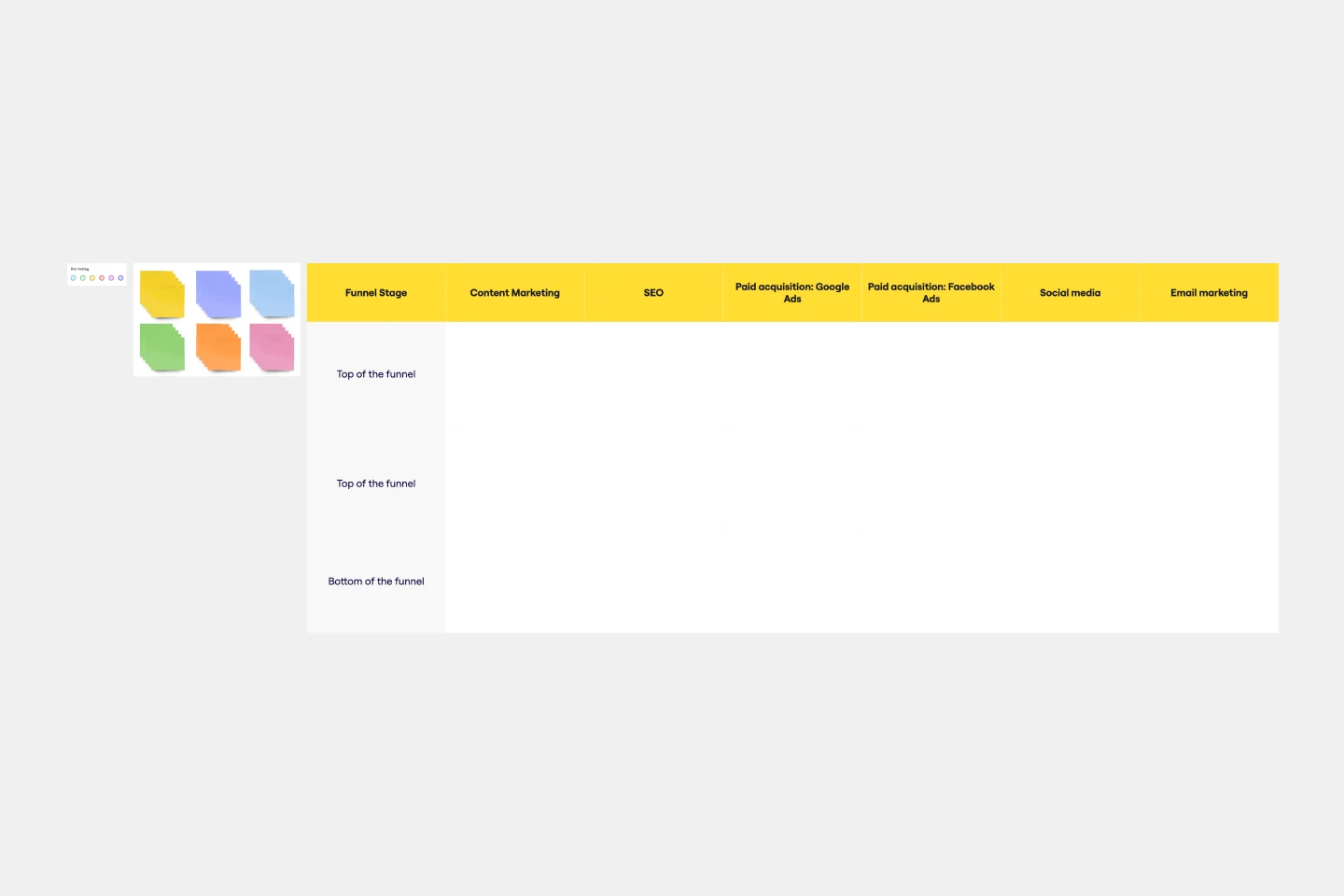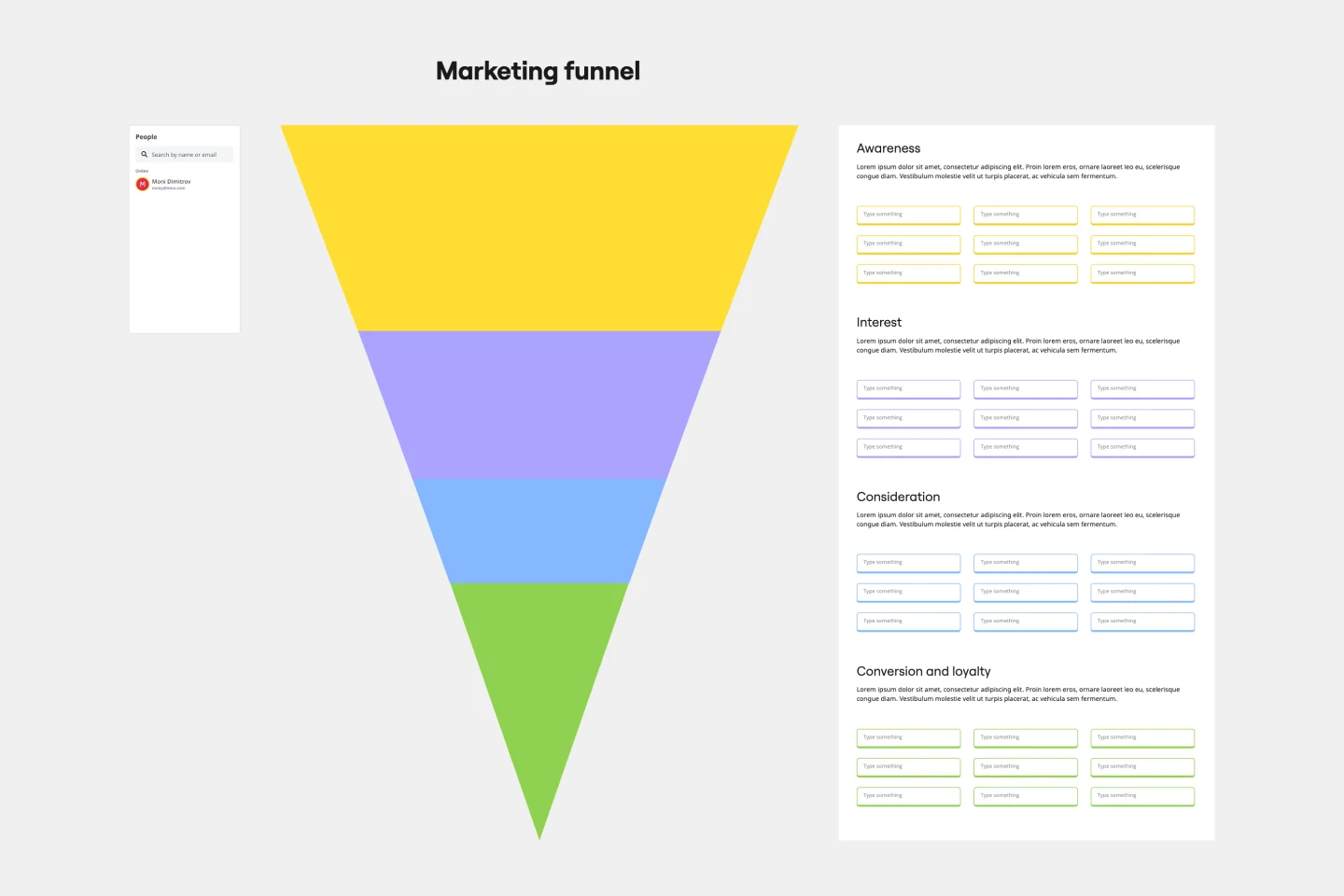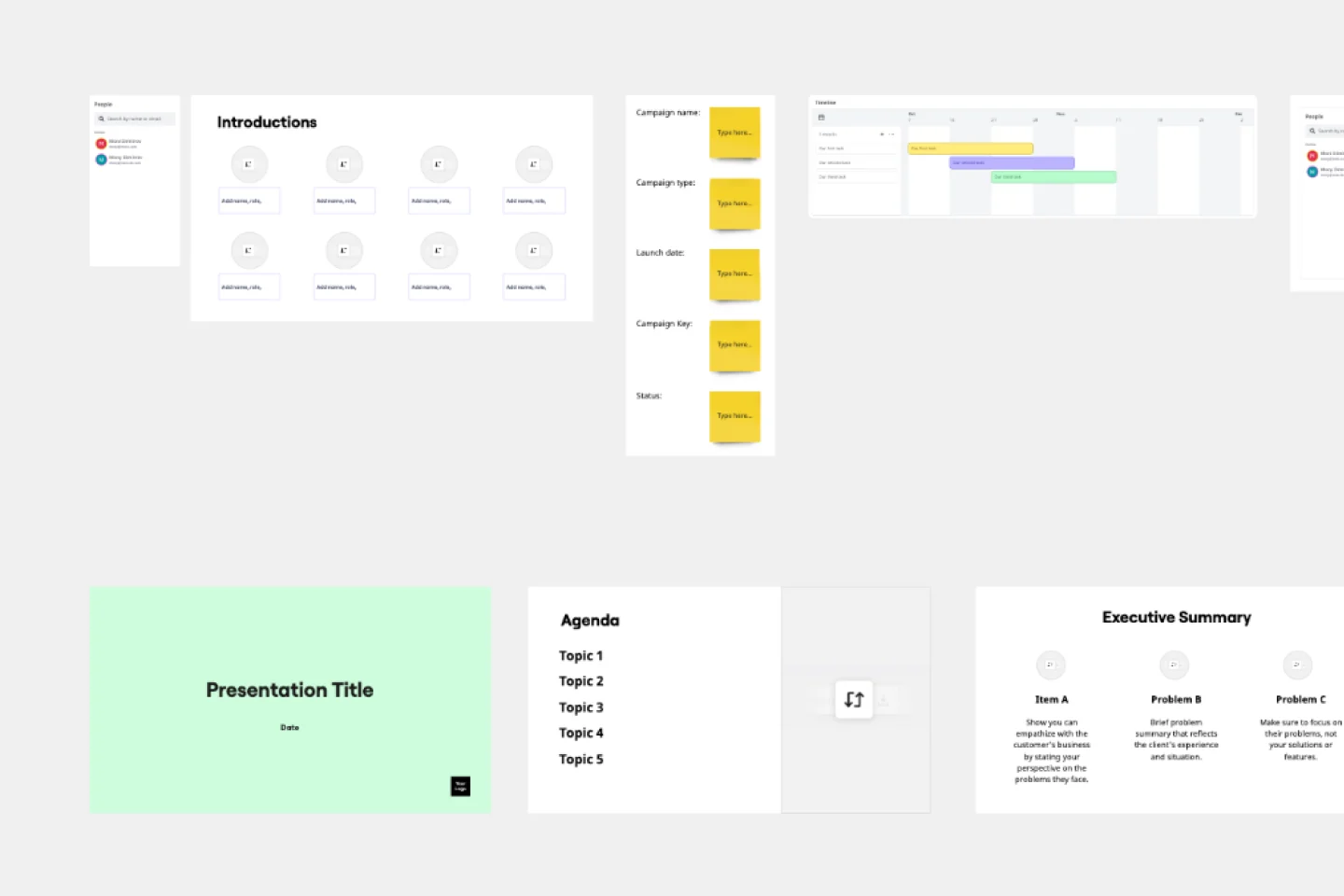About the Marketing GTM Plan Template
Launching a product without proper team alignment is like conducting an orchestra where half the musicians are reading different sheet music. You'll get noise instead of harmony.
Most GTM failures don't happen because of bad strategy – they happen because teams work in silos. Marketing creates campaigns based on one set of assumptions, sales prepares pitches using different messaging, and product development operates on an entirely separate timeline. By the time launch day arrives, everyone's executing different versions of the same plan.
This marketing GTM plan template, built using Miro's Docs format, solves that coordination nightmare. It creates a living document where all teams can see the same objectives, understand the unified messaging, track progress in real-time, and adjust together when things change. Because in Miro's innovation workspace, your GTM plan isn't just a static document – it connects directly to your project timelines, customer journey maps, and feedback boards.
How to use Miro's marketing GTM plan template
Transform your scattered launch planning into a coordinated team effort with these six essential steps.
1. Define your launch objectives clearly
Start by getting everyone on the same page about what success looks like. Use the objectives section to nail down specific, measurable goals that every team can rally behind. Instead of vague goals like "increase awareness," specify "acquire 500 qualified leads in the first month" or "achieve 15% trial-to-paid conversion rate."
2. Craft unified key messages
This is where most launches fall apart – when marketing talks about "revolutionary features" while sales focuses on "cost savings." Use the key messages section to create talking points that work across all channels and teams. Test these messages with your customer-facing teams before finalizing.
3. Map out your target audience precisely
Generic audience descriptions lead to generic campaigns. Get specific about who you're reaching, their pain points, and where they spend time. Link this section to your existing customer journey maps or persona templates in Miro for deeper insights.
4. Plan your channel strategy collaboratively
The channels and tactics section becomes your coordination hub. Assign owners, set deadlines, and track progress across email, social, PR, and in-product campaigns. Because this template integrates with Miro's other formats, you can link directly to campaign timelines or creative briefs.
5. Set success metrics everyone agrees on
Prevent post-launch finger-pointing by defining success metrics upfront. Make sure these align with broader business goals and that every team understands how their work contributes to hitting these numbers.
6. Build in risk management from day one
Use the risks and mitigations section to anticipate what could go wrong and plan accordingly. This proactive approach keeps launches on track when inevitable challenges arise.
What should be included in a marketing GTM plan template?
Every successful GTM plan needs these core elements to keep teams aligned and launches on track.
Launch objectives and success metrics
Clear goals prevent teams from optimizing for different outcomes. Your template should specify exactly what you're trying to achieve and how you'll measure it. This creates accountability and helps teams prioritize when resources get tight.
Unified messaging and positioning
Without consistent messaging, your launch becomes a game of telephone. Include key messages, value propositions, and positioning statements that work across all channels and customer touchpoints.
Target audience definition
Specific audience definitions help every team make better decisions. Marketing knows where to spend ad dollars, sales understands which prospects to prioritize, and product focuses on the right use cases.
Channel strategy and timeline
Map out which channels you'll use, when campaigns go live, and who owns what. This coordination prevents conflicting messages and ensures your launch builds momentum instead of creating confusion.
Asset requirements and dependencies
List all the creative assets, sales materials, and technical requirements needed for launch. This visibility helps teams plan their work and identify potential bottlenecks early.
Risk assessment and contingency plans
Launches rarely go exactly as planned. Build in risk assessment and backup plans so teams can adapt quickly when circumstances change.

Miro
Your virtual workspace for innovation
Miro is an innovation workspace designed for teams of every size, everywhere, to dream, design, and build the future together. Our mission? To empower these teams to create the next big thing, powered by AI at every step of the way. Over 90 million users around the world rely on Miro to untangle complex ideas, put customer needs first, and deliver products and services faster. All supported by best-in-class security, compliance, and scalability.
Categories
Similar templates
Digital Marketing Plan Template

Digital Marketing Plan Template
Crafting an effective digital marketing strategy can be a daunting task, but the Digital Marketing Plan Template can make it easier for you. This tool allows you to map out every channel tactic and is particularly beneficial in fostering collaboration among team members in a centralized space. The template's clear structure and intuitive editing features ensure a well-defined digital marketing strategy while also encouraging real-time collaboration. With the ability to seamlessly collaborate, share insights, and collectively contribute, your team can create a dynamic and successful digital marketing plan.
Marketing Funnel Template

Marketing Funnel Template
The Marketing Funnel Template is a powerful tool for businesses and marketers to understand and capture the complexities of the customer journey. From the initial awareness stage to loyalty, this template helps visualize each step of the process, making it easier to formulate strategies and allocate resources. One of its most significant benefits is the ability to visualize marketing efforts, ensuring they align with each phase of the customer journey. This results in more targeted initiatives, better resource utilization, and, ultimately, improved conversion rates. The template is an invaluable asset that helps businesses stay organized and focused on their marketing goals.
Marketing Campaign Template

Marketing Campaign Template
The Marketing Campaign Template is designed for effortless team collaboration. By providing a centralized space for planning, the template fosters a collaborative environment where ideas converge seamlessly. This enhances communication and cultivates a collective effort toward campaign success, allowing teams to share insights, refine strategies, and drive campaigns to new heights. With this template, collaboration becomes the cornerstone of campaign excellence, ensuring optimal results through your team's collective intelligence.
Digital Marketing Plan Template

Digital Marketing Plan Template
Crafting an effective digital marketing strategy can be a daunting task, but the Digital Marketing Plan Template can make it easier for you. This tool allows you to map out every channel tactic and is particularly beneficial in fostering collaboration among team members in a centralized space. The template's clear structure and intuitive editing features ensure a well-defined digital marketing strategy while also encouraging real-time collaboration. With the ability to seamlessly collaborate, share insights, and collectively contribute, your team can create a dynamic and successful digital marketing plan.
Marketing Funnel Template

Marketing Funnel Template
The Marketing Funnel Template is a powerful tool for businesses and marketers to understand and capture the complexities of the customer journey. From the initial awareness stage to loyalty, this template helps visualize each step of the process, making it easier to formulate strategies and allocate resources. One of its most significant benefits is the ability to visualize marketing efforts, ensuring they align with each phase of the customer journey. This results in more targeted initiatives, better resource utilization, and, ultimately, improved conversion rates. The template is an invaluable asset that helps businesses stay organized and focused on their marketing goals.
Marketing Campaign Template

Marketing Campaign Template
The Marketing Campaign Template is designed for effortless team collaboration. By providing a centralized space for planning, the template fosters a collaborative environment where ideas converge seamlessly. This enhances communication and cultivates a collective effort toward campaign success, allowing teams to share insights, refine strategies, and drive campaigns to new heights. With this template, collaboration becomes the cornerstone of campaign excellence, ensuring optimal results through your team's collective intelligence.